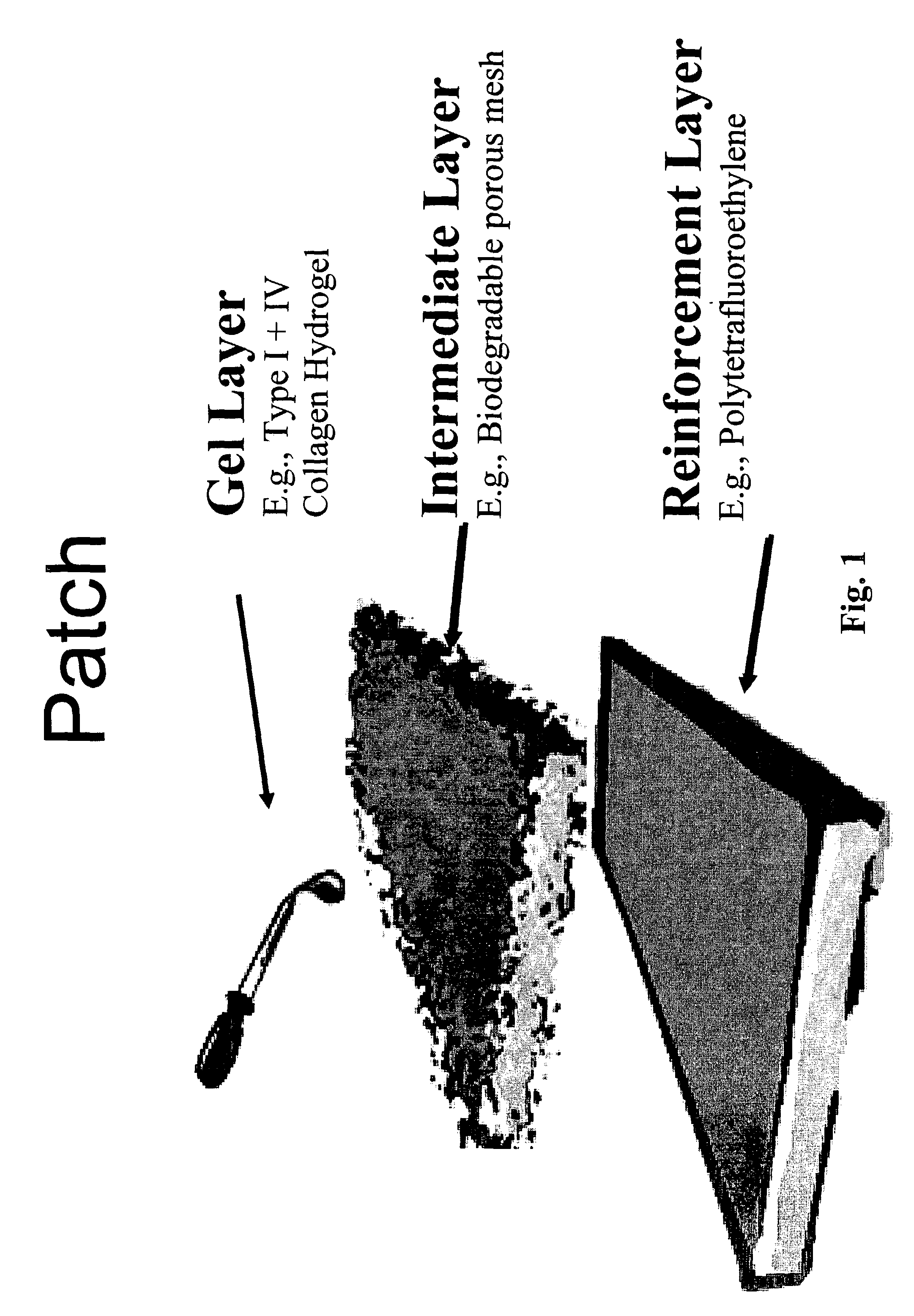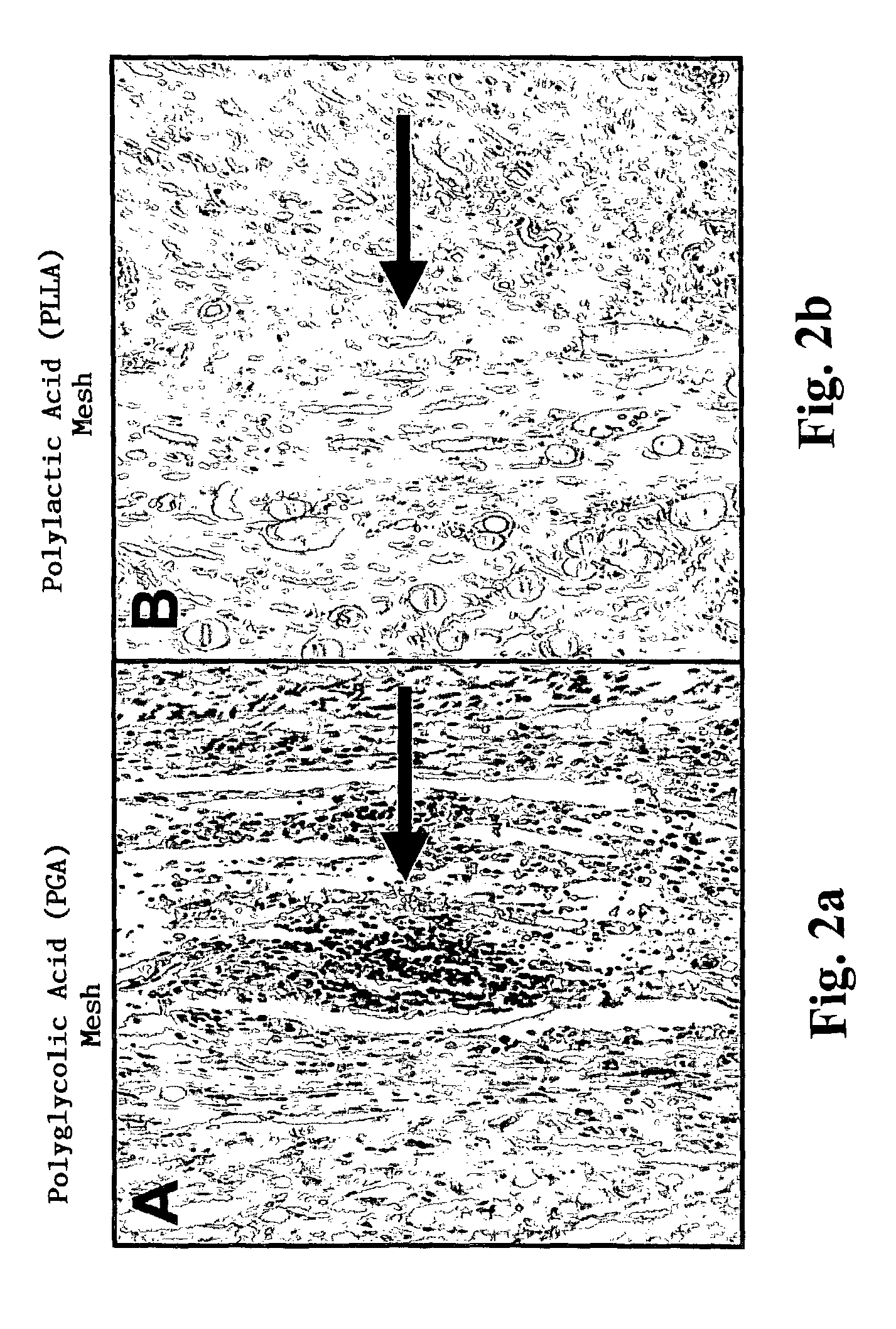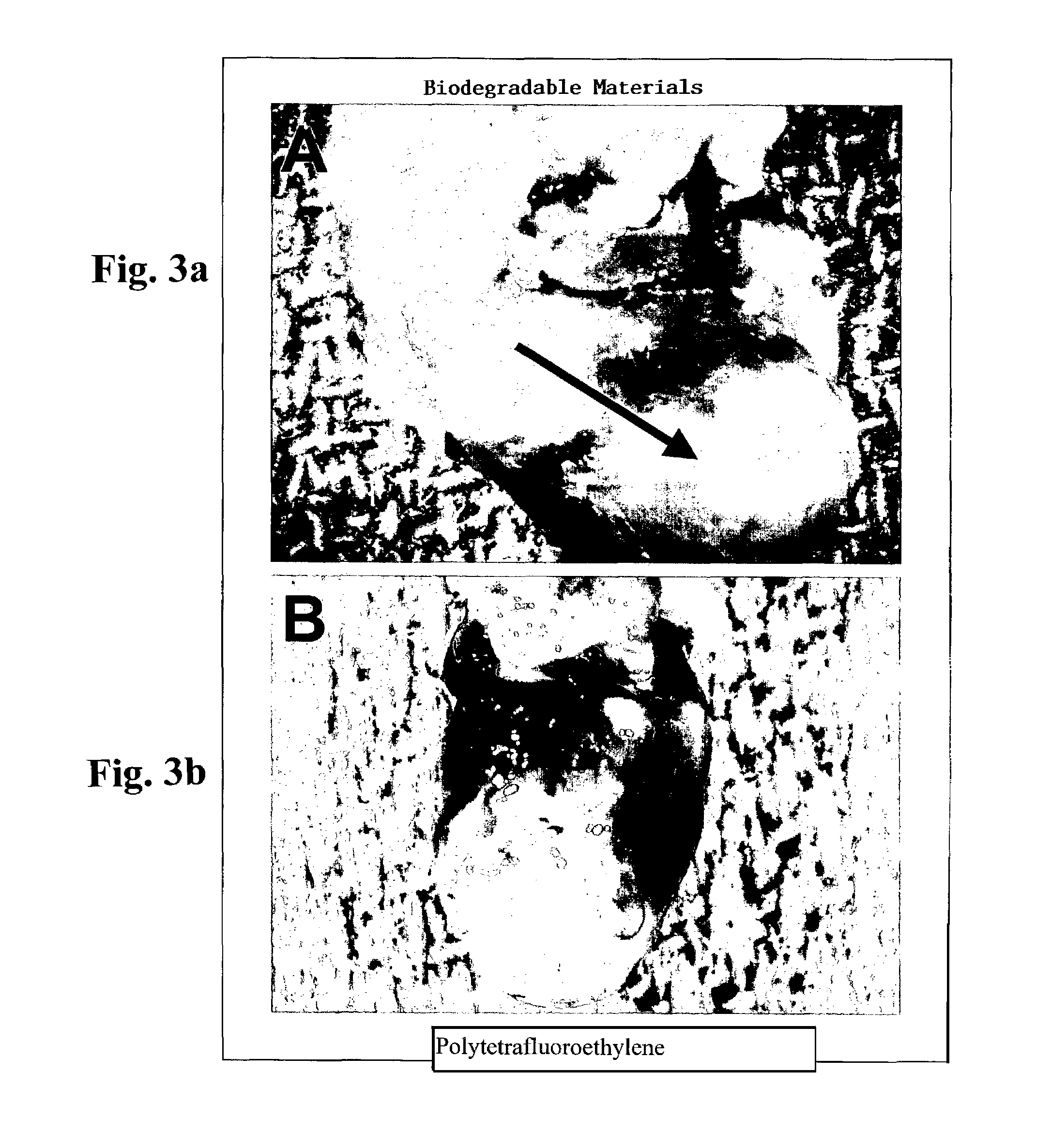Cell delivery patch for myocardial tissue engineering
- Summary
- Abstract
- Description
- Claims
- Application Information
AI Technical Summary
Problems solved by technology
Method used
Image
Examples
example 1
[0095]Construction of Biocompatible Scaffolding for Ventricular Replacement
[0096]FIG. 1 depicts a patch and a method of making same according to one aspect of the invention.
[0097]Collagen hydrogels may be utilized as the basis for ventricular reconstruction of the present invention. Such collagen hydrogels have been investigated for the formation of three dimensional cardiac tissue in vitro (Zimmermann W H, Fink C, Kralisch D, Remmers U, Weil J, Eschenhagen T. Three-dimensional engineered heart tissue from neonatal rat cardiac myocytes. Biotechnology &Bioengineering 2000; 68: 106-114). The liquid hydrogel was made by combining 66 μl of type I rat tail collagen (4.6 mg / ml)(BD Biosciences, Bedford, Mass.) with 66 μl of 2× Dulbecco's Modified Eagle's Medium (supplemented with 20% horse serum, 200 μg / ml streptomycin and 200 U / ml penicillin G), 9 μl of 0.1 M NaOH, 25 μl of Matrigelt® basement membrane matrix (growth factor reduced, phenol red free) (Collaborative Biomedical, Bedford, Mas...
example 2
[0102]Donor Operation and Scaffolding Implantation
[0103]For all except liver cell studies, animals utilized for transplantation consisted of male Lewis (LEW / SsHsd) rats weighing 200-225 g at the time of experimentation (Harlan, Indianapolis, In). All experimental protocols were reviewed and approved by the Institutional Animal Care and Use Committee of The University of Pennsylvania, and followed guidelines set forth in the National Institutes of Health Guide for the Care and Use of Laboratory Animals. Techniques to obtain the donor heart were used as described (Asfour B, Hare J M, Kohl T, et al. A simple new model of physiologically working heterotopic rat heart transplantation provides hemodynamic performance equivalent to that of an orthotopic heart, Journal of Heart &Lung Transplantation 1999; 18: 927-936). After induction of anesthesia with enflurane, a midline sternotomy was performed and extended caudally to an abdominal incision, exposing the inferior vena cava (IVC) and aor...
example 3
[0116]Isolation and Expansion of Mesenchymal Stem Cells
[0117]Bone marrow stroma was isolated and enriched for mesenchymal stem cells according to established protocols (Wakitani S, Saito T, Caplan A I. Myogenic cells derived from rat bone marrow mesenchymal stem cells exposed to 5-azacytidine, Muscle &Nerve 1995; 18: 1417-1426). Femora and tibiae of male Lewis (LEW / SsHsd) rats weighing 100-150 g were collected and after carefully removing the adherent soft tissue, the bone marrow plugs were flushed out and disaggregated into a single cell suspension by sequential passage through a 22-gauge and 26-gauge needle. This suspension was seeded onto plastic tissue culture plates and maintained in Dulbecco's Modified Eagle's Medium supplemented with 10% fetal calf serum specially selected to support expansion of mesenchymal stem cells (Stem Cell Technologies, Vancouver, Canada) and 1% penicillin / streptomycin. Three days later the medium was changed and the non-adherent cells discarded. Adher...
PUM
| Property | Measurement | Unit |
|---|---|---|
| Shape | aaaaa | aaaaa |
| Biocompatibility | aaaaa | aaaaa |
| Biodegradability | aaaaa | aaaaa |
Abstract
Description
Claims
Application Information
 Login to View More
Login to View More - R&D
- Intellectual Property
- Life Sciences
- Materials
- Tech Scout
- Unparalleled Data Quality
- Higher Quality Content
- 60% Fewer Hallucinations
Browse by: Latest US Patents, China's latest patents, Technical Efficacy Thesaurus, Application Domain, Technology Topic, Popular Technical Reports.
© 2025 PatSnap. All rights reserved.Legal|Privacy policy|Modern Slavery Act Transparency Statement|Sitemap|About US| Contact US: help@patsnap.com



